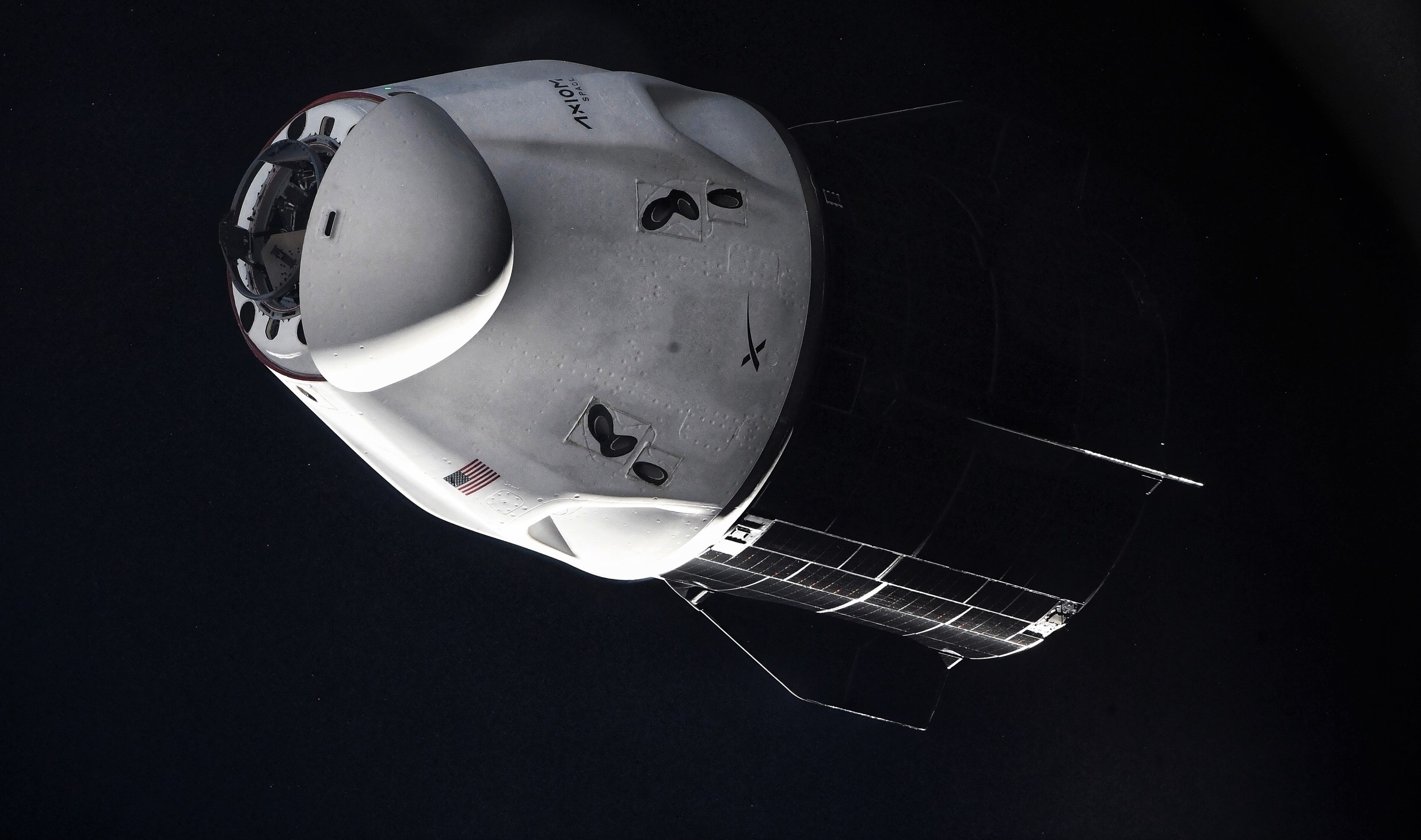
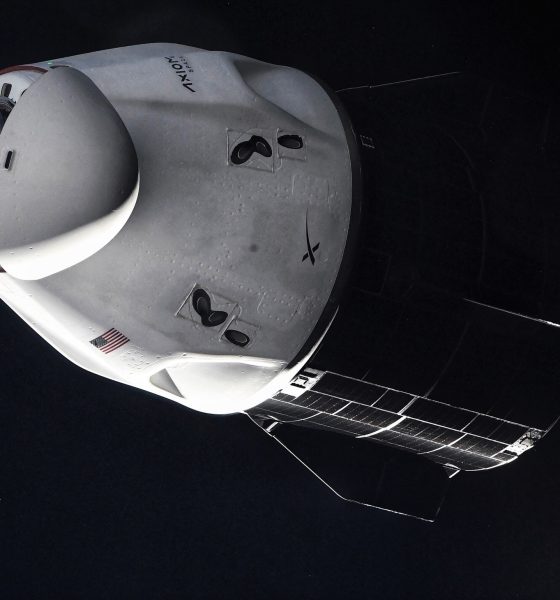
News
SpaceX director says six Crew Dragon launches per year is a sustainable goal
A senior manager says that SpaceX could sustainably launch six or more Crew Dragons per year if the market for private missions grows large enough to demand it.
Benji Reed, Senior Director of Human Spaceflight Programs, offered his thoughts on the matter in a press conference following SpaceX’s successfully recovery of Crew Dragon and four private Axiom-1 astronauts from the Gulf of Mexico, marking the end of the first all-private mission to the International Space Station (ISS). Asked what kind of launch cadence SpaceX believes it could handle going forward, Reed stated that he “would love to see…half a dozen crew flights…or more” per year and believes that “SpaceX can sustain that [pace] if there’s a market for it.”
The question is an important one after a SpaceX executive confirmed to Reuters earlier this year that the company has already ended production of Crew Dragon after building just a handful of reusable capsules. With that fleet of four spacecraft, it hasn’t been clear how many crewed missions SpaceX can – or thinks it can – launch each year. To some extent, it’s long been expected that SpaceX would try to replace both Falcon rockets and Dragon spacecraft with Starship as soon as the next-generation fully-reusable rocket is ready.
However, without major redesigns or a new and heavily modified variant of the rocket’s upper stage, it’s difficult to imagine NASA transitioning its International Space Station astronaut launches from Dragon to Starship anytime soon. Even though Starship could feasibly revolutionize spaceflight and NASA has already contracted with SpaceX to build a version of the rocket to land NASA astronauts on the Moon, the one thing it’s hard to imagine the space agency ever compromising on is safety. Crew Dragon has a built-in launch escape system that allows the capsule to almost instantly whisk astronauts away from a failing rocket at any point before or during a launch.
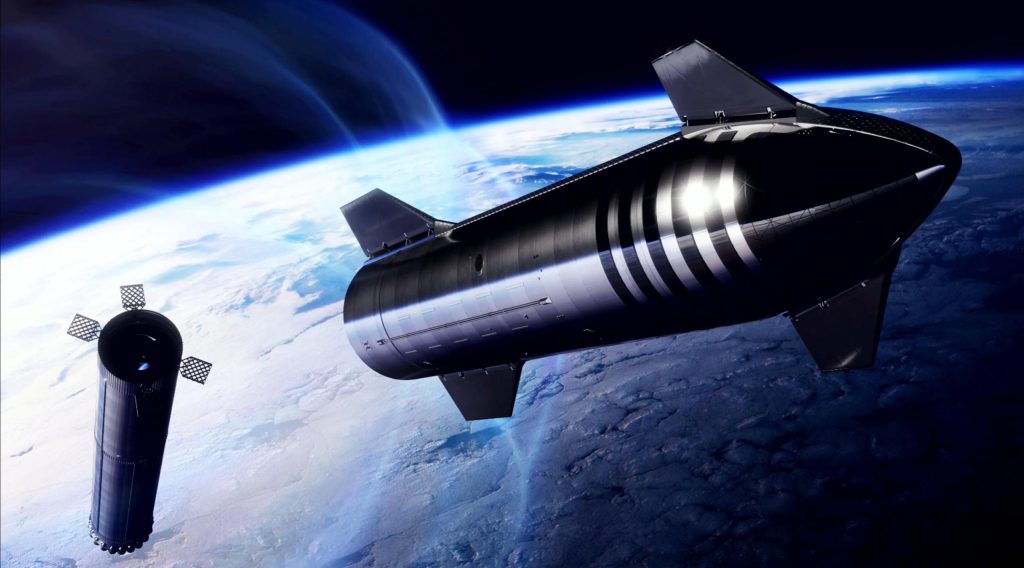
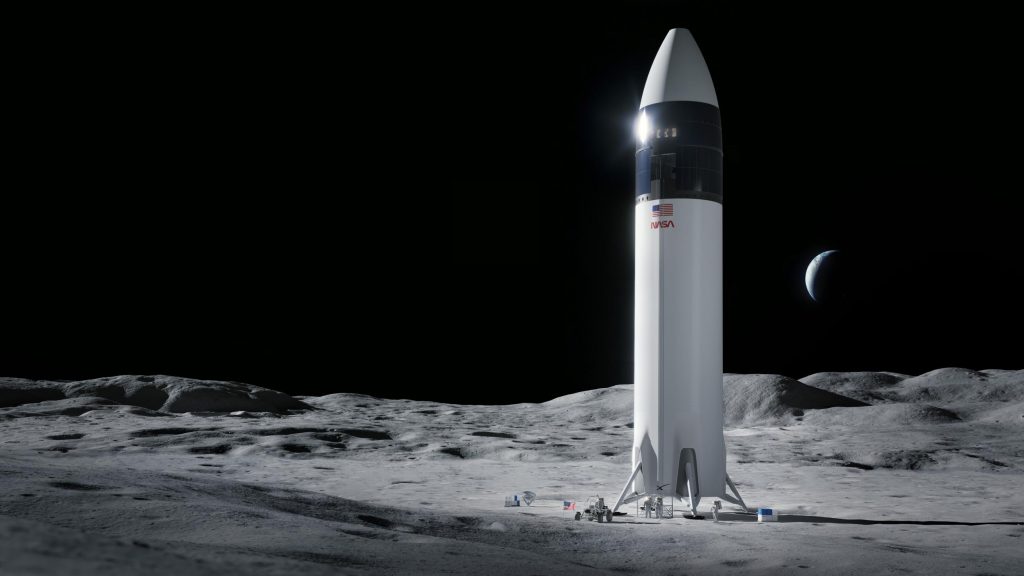
Starship has no such escape system and SpaceX has no apparent plans to develop a variant of the crew-carrying ship with a comparable abort system. Because the Starship rocket’s second stage is the orbital spacecraft, crew cabin, and reentry vehicle, it simply isn’t possible for the current design of the next-generation vehicle to match the theoretical safety of Falcon 9 and Crew Dragon. CEO Elon Musk has discussed increasing the number of engines on Starship to allow it to escape from a failing booster but that would leave astronauts with no way to escape from the upper stage itself.
On top of Dragon’s fundamentally superior safety capabilities, Falcon 9 also has an extraordinary record of 125 consecutively successful launches. If NASA wouldn’t let Dragon launch its astronauts on Falcon 9 without an active escape system, it’s hard to imagine how many consecutive launch successes Starship would need before the agency would even think about retiring Crew Dragon.
This is all to say that SpaceX is likely going to be stuck operating Crew Dragon for the indefinite future as long as it’s too stubborn to develop a true launch escape system for Starship. Even though the recently announced Polaris Program aims to culminate in the “first flight of Starship with humans on board,” it’s likely that most private SpaceX crew launch customers will follow NASA’s lead.
Thankfully, even with four Crew Dragon capsules, it’s likely that SpaceX can manage significantly more than six crewed missions per year if the demand is there and commercial passengers – mirroring NASA – aren’t ready to risk flying on Starship. Already, SpaceX has successfully launched the same Crew Dragon capsule to orbit twice in 137 days. If SpaceX continues flying back-to-back NASA crew transport missions while Boeing’s Starliner inches through qualification, that will tie up two Dragons per year, limiting SpaceX to two launches for NASA and around four to five private astronaut launches per year.
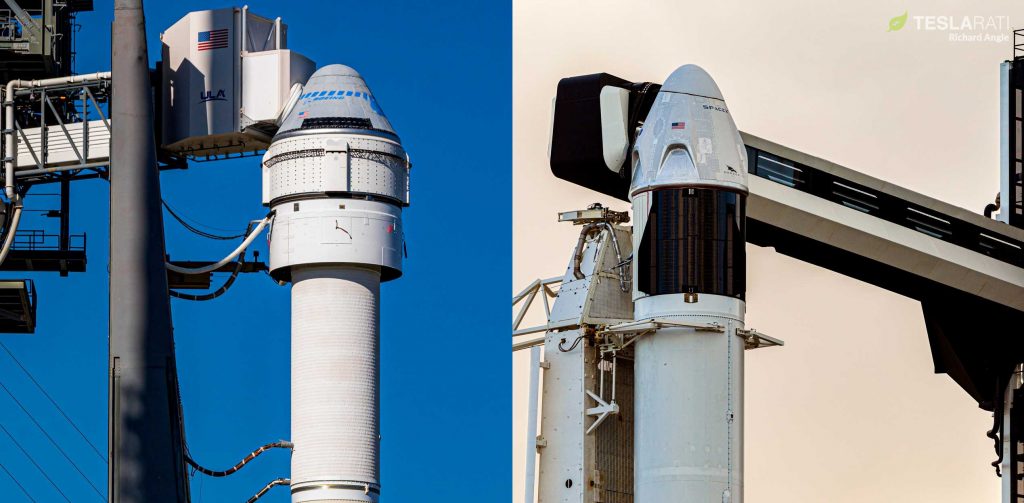
Assuming Starliner finally reaches operational readiness and begins supporting every other NASA crew launch, SpaceX could feasibly launch one NASA mission and seven private missions (lasting up to two weeks each) per year by the end of 2023. Additionally, if SpaceX can improve Crew Dragon turnaround to 120 days, the fleet could support 10 crew launches per year. 90 days? 13 launches per year. Private missions to the ISS would add plenty of schedule constraints, reducing the total number of opportunities, but that’s a minor problem in comparison.
The only lingering technical concern, then, is the longevity of SpaceX’s Crew Dragon capsule fleet. SpaceX and NASA have initially certified each capsule for five missions, but after Crew-4’s April 27th launch, the fleet has already eaten up 7 of the 20 flights that limit permits. Assuming no additional demand for private launches, the remaining 13 ‘certified’ flights might last SpaceX through 2024. Sooner than later, with NASA’s blessing, it will either need to significantly increase the number of missions each capsule is certified to fly, build new capsules, or find a way to transition to Starship.

News
SpaceX shades airline for seeking contract with Amazon’s Starlink rival

SpaceX employees, including its CEO Elon Musk, shaded American Airlines on social media this past weekend due to the company’s reported talks with Amazon’s Starlink rival, Leo.
Starlink has been adopted by several airlines, including United Airlines, Qatar Airways, Hawaiian Airlines, WestJet, Air France, airBaltic, and others. It has gained notoriety as an extremely solid, dependable, and reliable option for airline travel, as traditional options frequently cause users to lose connection to the internet.
Many airlines have made the switch, while others continue to mull the options available to them. American Airlines is one of them.
A report from Bloomberg indicates the airline is thinking of going with a Starlink rival owned by Amazon, called Leo. It was previously referred to as Project Kuiper.
American CEO Robert Isom said (via Bloomberg):
“While there’s Starlink, there are other low-Earth-orbit satellite opportunities that we can look at. We’re making sure that American is going to have what our customers need.”
Isom also said American has been in touch with Amazon about installing Leo on its aircraft, but he would not reveal the status of any discussions with the company.
The report caught the attention of Michael Nicolls, the Vice President of Starlink Engineering at SpaceX, who said:
“Only fly on airlines with good connectivity… and only one source of good connectivity at the moment…”
CEO Elon Musk replied to Nicolls by stating that American Airlines risks losing “a lot of customers if their connectivity solution fails.”
American Airlines will lose a lot of customers if their connectivity solution fails
— Elon Musk (@elonmusk) December 14, 2025
There are over 8,000 Starlink satellites in orbit currently, offering internet coverage in over 150 countries and territories globally. SpaceX expands its array of satellites nearly every week with launches from California and Florida, aiming to offer internet access to everyone across the globe.
Currently, the company is focusing on expanding into new markets, such as Africa and Asia.
News
Tesla Model Y Standard stuns in new range test, besting its Premium siblings
Tesla’s newer vehicles have continued to meet or exceed their EPA estimates. This is a drastic change, as every 2018-2023 model year Tesla that Edmunds assessed did not meet its range estimates.

The Tesla Model Y Standard stunned in a new range test performed by automotive media outlet Edmunds, besting all of its Premium siblings that are more expensive and more luxurious in terms of features.
Testing showed the Model Y Standard exceeded its EPA-estimated range rating of 321 miles, as Edmunds said it is the “longest-range Model Y that we’ve ever put on our loop.” In the past, some vehicles have come up short in comparison with EPA ranges; for example, the Model Y’s previous generation vehicle had an EPA-estimated range of 330 miles, but only drove 310.
Additionally, the Launch Series Model Y, the first configuration to be built in the “Juniper” program, landed perfectly on the EPA’s range estimates at 327 miles.
It was also more efficient than Premium offerings, as it utilized just 22.8 kWh to go 100 miles. The Launch Series used 26.8 kWh to travel the same distance.
It is tested using Edmunds’ traditional EV range testing procedure, which follows a strict route of 60 percent city and 40 percent highway driving. The average speed throughout the trip is 40 MPH, and the car is required to stay within 5 MPH of all posted speed limits.
Each car is also put in its most efficient drive setting, and the climate is kept on auto at 72 degrees.
“All of this most accurately represents the real-world driving that owners do day to day,” the publication says.
With this procedure, testing is as consistent as it can get. Of course, there are other factors, like temperature and traffic density. However, one thing is important to note: Tesla’s newer vehicles have continued to meet or exceed their EPA estimates. This is a drastic change, as every 2018-2023 model year Tesla that Edmunds assessed did not meet its range estimates.
Tesla Model Y Standard vs. Tesla Model Y Premium
Tesla’s two Model Y levels both offer a great option for whichever fits your budget. However, when you sit in both cars, you will notice distinct differences between them.
The Premium definitely has a more luxurious feel, while the Standard is stripped of many of the more premium features, like Vegan Leather Interior, acoustic-lined glass, and a better sound system.
You can read our full review of the Model Y Standard below:
Tesla Model Y Standard Full Review: Is it worth the lower price?
News
Xpeng CEO: Tesla FSD 14.2 has developed “near-Level 4” performance
While acknowledging that imperfections remain, the Xpeng CEO said FSD’s current iteration significantly surpasses last year’s capabilities.

Xpeng CEO He Xiaopeng has offered fresh praise for Tesla’s Full Self-Driving (FSD) system after revisiting Silicon Valley more than a year after his first hands-on experience.
Following extended test drives of Tesla vehicles running the latest FSD software, He stated that the system has made major strides, reinforcing his view that Tesla’s approach to autonomy is indeed the proper path towards autonomy.
Tesla FSD closing in on Level 4 driving
During his visit, He test-drove a Tesla equipped with FSD V14.2. He also rode in a Tesla Robotaxi. Over roughly five hours of driving across Silicon Valley and San Francisco, He said both vehicles delivered consistent and reassuring performance, a notable improvement from his experience a year earlier.
According to He, Tesla’s FSD has evolved from a smooth Level 2 advanced driver assistance system into what he described as a “near-Level 4” experience in terms of capabilities. While acknowledging that imperfections remain, the Xpeng CEO said FSD’s current iteration significantly surpasses last year’s capabilities. He also reiterated his belief that Tesla’s strategy of using the same autonomous software and hardware architecture across private vehicles and robotaxis is the right long-term approach, allowing users to bypass intermediate autonomy stages and move closer to Level 4 functionality.
He previously tested Tesla’s FSD V12.3.6 and Waymo vehicles in California in mid-2024, noting at the time that Waymo performed better in dense urban environments like San Francisco, while Tesla excelled in Silicon Valley and on highways.
Xpeng’s ambitious autonomy roadmap and internal challenge
The Silicon Valley visit also served as a benchmark for Xpeng’s own autonomy ambitions. He stated that Xpeng is looking to improve its VLA autonomous driving system to match the performance of Tesla’s FSD V14.2 within China by August 30, 2026. Xpeng is poised to release its VLA 2.0 smart driving software next quarter, though He cautioned that the initial version will not be able to match FSD V14.2’s capabilities, as noted in a CNEV Post report.
He also added a personal twist to the goal, publicly challenging Xpeng’s autonomous driving team. If the performance target is met by the 2026 deadline, the CEO stated that he will approve the creation of a Chinese-style cafeteria for Xpeng’s Silicon Valley team. If not, Liu Xianming, head of Xpeng’s autonomous driving unit, has pledged to run naked across the Golden Gate Bridge, He noted.








